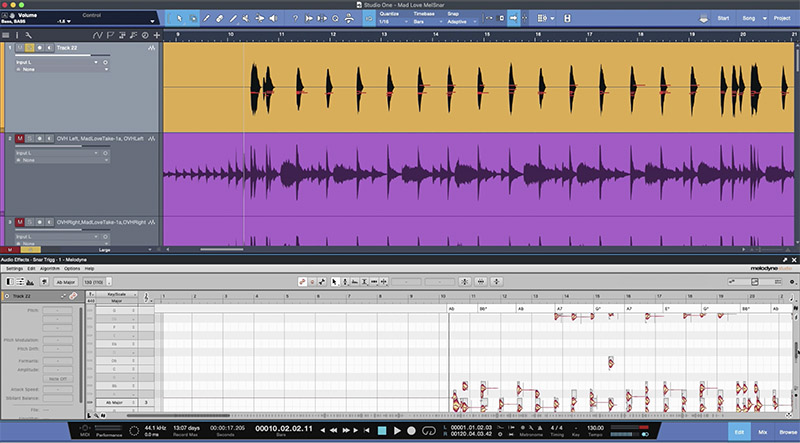


When time-stretching is applied to the word “sweet”, for example, it becomes “s-weeeeeeee-t” (not “sss-www-eeeeee-ttt” or anything ghastly like that!). The way changes in the length of notes is implemented in Melodyne now also better represents the natural behavior of singers: if a note contains both sibilants and pitched components, the sibilants remain unaltered. In the display, however, the hatched areas do move up or down with the rest of the blob when the corresponding note is transposed, but they do this solely in the interests of legibility, so that the visual integrity of each syllable is preserved. When you alter the pitch of a note, Melodyne does not alter the frequency of the sibilants, as that would sound unnatural – after all, in real life no singer has the wherewithal to sing one “S” higher than another or pitch the sound of their own breathing. If any part of the detection seems strange or incorrect to you, you can switch to Note Assignment Mode where you will find the requisite Correction Tools though doing so is seldom necessary.

This is how Melodyne marks not only sibilants proper (“s”, “z”, “ch” and “zh”) but also other unvoiced consonants like “k” and “t” as well as the sound of the vocalist inhaling or exhaling between words. The extent of any noise-like components that have been detected – we call them ‘sibilants’ – is indicated by hatching. The upshot is better sound, pure and simple. The Melodic Algorithm with Sibilant Detectionįirst the good news: You don’t have to do anything during its initial analysis of the material (the ‘detection’), the algorithm in its default setting automatically separates the pitched from the unpitched (noise-like) components of the sound and thus behaves correctly during the playback.


 0 kommentar(er)
0 kommentar(er)
